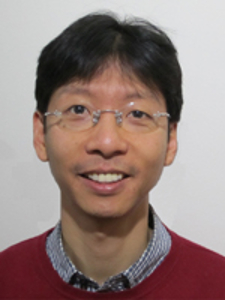OSE Seminar by Prof. Sang E. Han on Lessons from Nature for Stability in Optical Scattering Nanostructures
Departmental News

Posted: March 9, 2021
Date: Thursday, March 11, 2021
Time: 11:00 AM to 12:00 PM
Location: via Zoom
Abstract:
Nature exploits intriguing nanostructures to realize a vast range of optical effects such as iridescence, camouflage, solar rejection, metallic reflection, and extreme scattering. Insect cuticles employ a range of crystal / amorphous nanostructures for their unique optical properties. In particular, Cyphochilus white beetle scales exhibit exceptionally strong light scattering power that originates from their regular random fibrillar network nanostructure. Among known biological materials, the beetle scales exhibit the strongest light scattering power which is greater than common white papers by an order of magnitude. The structure is believed to be formed by late-stage spinodal decomposition in a lipid membrane system. However, the structure is characterized by nonconstant curvatures and appreciable anisotropy, which are not expected from late-stage spinodal decomposition, so that the surface free energy is not minimized. Nevertheless, a high degree of regularity represented by the relatively uniform fibril dimensions and smooth fibril surfaces in the structure may result from a process similar to spinodal decomposition. In this talk, we will discuss the importance of regularity in the beetle scale structure for optical scattering, in terms of surface curvatures and length scales. Our study indicates that regularity in anisotropic random nanostructures can achieve strong light scattering with a moderate surface free energy, which contributes to long-term stability of nanostructures. We will discuss how man-made materials, using regularity, can approach the scattering power of the beetle scales with a tolerable surface free energy.
Biography:
Dr. Sang Eon Han is an Associate Professor in the Department of Chemical & Biological Engineering and Center for High Technology Materials at the University of New Mexico. He earned his Ph.D. in Chemical Engineering from the University of Minnesota and his M.S. & B.S. in Chemical Engineering from Seoul National University. He was a Postdoctoral Associate in the Department of Mechanical Engineering in MIT. His current research is focused on optical and optoelectronic nanomaterials for efficient energy usage. He is a recipient of Dean’s Faculty Excellence Award, KIChE President Young Investigator Award; UNM Junior Faculty Research Excellence Award; NSF Career Award; Ralph E. Powe Junior Faculty Enhancement Award; and Fellowship from the Samsung Scholarship Foundation.
